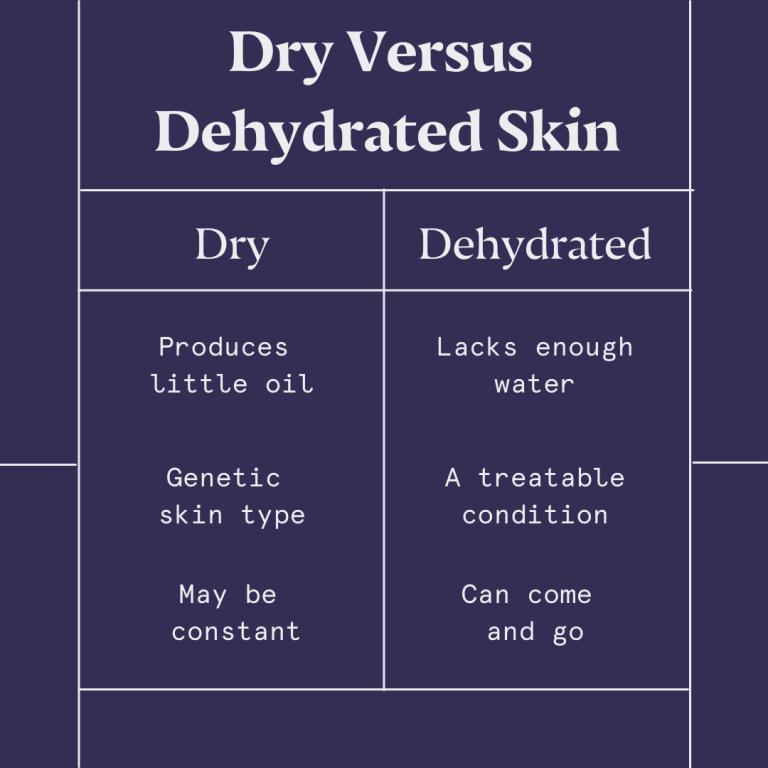How it works:
Share your skin goals and snap selfies
Your dermatology provider prescribes your formula
Apply nightly for happy, healthy skin
How it works:
How it works:
Share your skin goals and snap selfies
Your dermatology provider prescribes your formula
Apply nightly for happy, healthy skin
How it works:
Men’s skincare: Treating dry skin on the face
Simple lifestyle changes, a skincare routine, and a good moisturizer can soothe dry skin.



Routine skincare is for everyone—it’s gender-neutral. Certain skin conditions, such as dry skin, can affect all of us at some point.
Fortunately, there are several ways to treat and help prevent dry, flaky skin. But first, you need to know what causes dry skin on the face. Here we’ll explain common contributing factors and provide a list of ways to help bring the moisture back.
Dry skin vs. dehydrated skin
Dealing with dry skin on the face and scalp can be particularly frustrating. And it can occur no matter your gender or skin type—meaning even people with oily skin can experience flaking and peeling.
First, it’s important to note that dry skin and dehydrated skin are two different things. Dehydrated skin lacks water, possibly due to external factors. Dry skin, on the other hand, is a skin type that occurs when skin doesn’t produce enough oil (sebum).¹ A dry skin type may limit your skin’s ability to retain moisture, making it more vulnerable to environmental influences, such as the weather or a harsh skincare product, and possibly causing it to become dehydrated.
Regardless of your skin type, no one is exempt from the skin-drying effects of the weather or UV exposure.

Why is my skin feeling dry (aka dehydrated)?
There are many contributing factors to men’s dry skin on the forehead, face, and scalp, including the climate, sun exposure, skincare products, and underlying skin conditions. Here’s what you need to know:
Weather and climate may contribute to the look and feel of your skin. Cold or dry climates and windy conditions can sap moisture from your skin. Winter weather and high altitudes where temperatures are below freezing also contribute to dryness.²
Skincare ingredients can lead to excessive dryness, redness, scaling, and pruritus (itching) as the skin adjusts to new ingredients, such as topical retinoids.
Sun exposure without adequate protection can damage the skin’s natural protective barrier, potentially leading to dehydrated, chapped, and cracked skin.³
Artificial ventilation from indoor radiator heat or air conditioning can decrease indoor humidity. This lack of moisture in the environment can lead to dehydrated skin.⁴
Underlying skin conditions, including eczema, psoriasis, contact dermatitis, and seborrheic dermatitis, can cause dry skin.
Eczema (atopic dermatitis) is a chronic skin condition that appears as dry, irritated, and itchy skin.⁵
Psoriasis presents as rough, scaly patches called plaques. It most often occurs on the knees, elbows, torso, and scalp.⁶
Contact dermatitis is an inflammatory skin condition that occurs when an irritant or allergen comes in contact with your skin, such as certain chemicals or poison ivy. Your skin may become red, dry, and itchy.⁷
Seborrheic dermatitis appears reddish and/or greasy, and often has white or yellowish crusty scales on its surface. Seborrheic dermatitis is a long-lasting skin condition that can flare up in cold and dry climates. Stress can also trigger flare-ups.⁸
What are the symptoms of dry skin?
The symptoms you experience from dry skin can be very different from what others experience. Your symptoms will likely vary depending on the climate, the weather, and how much time you spend outside. Here are common symptoms associated with dry skin:
Reddish in color
Feels tight, itchy, and/or rough
Flaky or peeling
Noticeable fine lines

How to treat dry skin on the face
Some people experience fleeting symptoms that come and go with the weather. Others may wage war with dryness throughout the year. Whether you’re in it for a season or a lifetime, here are several ways to help banish dry, flaky skin:
Trade in your soap. Instead of using bar soap or body wash on your face, use a gentle cleanser designed for your skin type. Many soaps contain ingredients such as added fragrances and denatured alcohol that can be drying.
Moisturize daily—or more often if needed! Using products marketed as men’s dry skin face creams isn’t necessary. Using ones that contain humectants (such as hyaluronic acid) is more important. These attract water, while emollients (ceramides) help seal in moisture.
Protect your skin from the environment. Weather-appropriate clothing helps protect your skin from cold, windy conditions. And don’t forget the sunscreen—use a broad-spectrum sunscreen with at least SPF 30 every day to protect your face from UV rays.
Avoid hot showers and hot water. Use warm water in the shower and to wash your face. Limit your shower time to 5-10 minutes, and close the bathroom door to increase the humidity. Blot your skin dry with a towel, and apply lotion after drying off.⁹
Use a humidifier. Invest in a humidifier for your home or office during the dry months of the year.
Establish a skincare routine. Taking care of your skin is important for everyone. A simple routine includes cleansing, moisturizing, and protecting. If you feel like skipping a step, use a moisturizer with SPF protection.
Ingredients that can lead to dry skin
Some skincare products may contain ingredients you should avoid to help prevent dehydrated skin. Here’s a list of the ingredients to ditch and why:
Sodium lauryl sulfate (SLS) is common in shampoos and cleansers. It’s a surfactant, meaning it’s used as a cleansing and foaming agent. Studies show that skin repeatedly exposed to SLS can show significant redness, dryness, and increased water loss, though these symptoms do improve once the irritant is removed.¹⁰
Sodium laureth sulfate (SLES) ) is similar to SLS in its effects but may be milder and less irritating.¹¹
Denatured alcohol is simply ethanol that has an added “denaturant” that makes it undrinkable.¹² Studies have shown that ethanol use is associated with skin irritation and dermatitis.¹³
Added fragrances are known contributors to dry and irritated skin.¹⁴ People with sensitive skin may experience rashes, itching, and burning. Although synthetic fragrances are usually a no, some pure essential oils can also be drying and irritating.

Curology customized skincare for your concern
Dry skin needs some TLC—and that goes for everyone, regardless of gender. A skincare routine with proven moisturizing ingredients and some small lifestyle changes can go a long way.
Get a moisturizer that does the job it’s designed to do—moisturize. Curology offers two types of dermatologist-developed moisturizers that are made for all skin types.
The moisturizer: A lightly hydrating gel-cream hybrid moisturizer with proven ingredients such as hyaluronic acid.
The rich moisturizer: Designed for dry and deep hydration. It includes hyaluronic acid, shea butter, aloe, glycerin, plant-based squalane, and allantoin to lock down moisture and help improve the appearance of fine lines and wrinkles.
Our products are designed to be non-comedogenic, dye-free, paraben-free, and hypoallergenic. You can give them a try when you sign up for Curology!
FAQs
It’s important to note that dry skin and dehydrated skin are two different things. Dehydrated skin lacks water, possibly due to external factors. Dry skin, on the other hand, is a skin type that occurs when skin doesn’t produce enough oil (sebum).
Weather and climate
Skincare ingredients
Sun exposure
Artificial ventilation
Underlying skin conditions
Eczema
Psoriasis
Contact dermatitis
Seborrheic dermatitis
Reddish in color
Feels tight, itchy, and/or rough
Flaky or peeling
Noticeable fine lines
Trade in your soap
Moisturize daily—or more often if needed!
Protect your skin from the environment
Avoid hot showers and hot water
Use a humidifier
Establish a skincare routine
P.S. We did the homework so you don’t have to:
Ooi K. Onset Mechanism and Pharmaceutical Management of Dry Skin.Biological & pharmaceutical bulletin. (2021).
Stick, C. and Proksch, E. The influence of climate on the treatment of dry skin with moisturizer.Treatment of Dry Skin Syndrome. Springer, Berlin, Heidelberg. (2012, January 1).
Harvard Medical School. Sun-damaged skin.Harvard Health Publishing. (2020 February 25).
Stick, C. and Proksch, E. The influence of climate on the treatment of dry skin with moisturizer. Ibid.
American Academy of Dermatology. Eczema Types: Atopic Dermatitis Overview. (n.d.).
Nair, P. A., & Badri, T. Psoriasis. In StatPearls. StatPearls Publishing. (2022).
Litchman G, Nair PA, et al. Contact Dermatitis. In StatPearls. StatPearls Publishing. (2022).
American Academy of Dermatology. Seborrheic Dermatitis: Overview. (n.d.).
American Academy of Dermatology. Dermatologists’ top tips for relieving dry skin. (n.d.).
Branco, N., et al. Long-term repetitive sodium lauryl sulfate-induced irritation of the skin: an in vivo study.Contact dermatitis. (2005).
Löffler, H. and Happle, R. Profile of irritant patch testing with detergents: Sodium lauryl sulfate, sodium laureth sulfate, and alkyl polyglucoside.Contact Dermatitis. (January 2003).
US Food and Drug Administration. “Alcohol Free.” (2022 February 25).
Lachenmeier D. W. Safety evaluation of topical applications of ethanol on the skin and inside the oral cavity.Journal of occupational medicine and toxicology (London, England). (2008).
American Academy of Dermatology. Dermatologists’ top tips for relieving dry skin. (n.d.).
* Subject to consultation. Subscription is required. Results may vary.

Curology Team

Kristen Jokela, NP-C